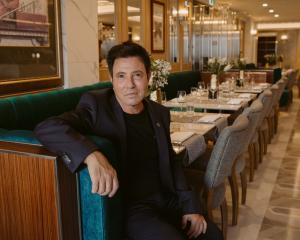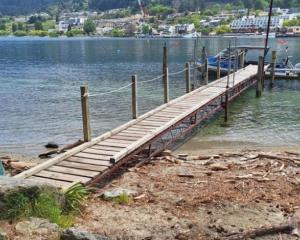
TonerPave, which is being used to resurface the 40,000sqm Queenstown Airport apron, is not just doing its part to save the planet. Some say its performance is actually better than traditional tarmac.
It is the latest sustainability initiative undertaken by the ever-growing airport company, which is including supporting the environment in all of its business plans.
TonerPave, being made by Downer, uses a combination of beer bottle sand and modified toner polymer made from recycled toner cartridges.
For the airport project 1.5million bottles and more than 300,000 used toner cartridges were recycled in Auckland and brought to Queenstown.
The material was produced by Downer's mobile asphalt plant which sat at the end of the airport's runway over the course of the five-week project, which began on November 11.
Having the plant on site reduced road haulage by 720,000km.
Downer New Zealand chief executive Steve Killeen said TonerPave was researched and developed by Downer, in conjunction with Close the Loop in Australia where it had been tested extensively and used on several sites.

''One of the characteristics of TonerPave is as it gets hotter it stiffens and that reduces rutting over the life [of the product].''
This was the second project using it in New Zealand - the first was in Auckland - but, the airport project was ''a bit of a first of its kind in such a highly-engineered product'', Mr Killeen said.
DB Export supplied the beer bottle sand and Downer had partnered with Fuji Xerox for the used cartridges.
There were plans for Downer to find other ways of diverting waste from landfill, Mr Killeen said.
''We're starting to see now the use of soft plastics and hard plastics [as well], so taking waste streams that are creating real challenges across the globe and reusing them in highly engineered materials, all tested and proven in a laboratory environment.
''If we take the hard plastics, we're currently trialling [a project] with New Plymouth District Council, so there are a lot of people coming to the table to bring an open mindset to what we might do in the future.
''It's certainly part of our thought leadership process around improving construction in its entirety.
''As an industry we produce waste, we have emissions and with a bit of focus, we can do better.''
Downer was trying to make its construction sites zero waste and TonerPave ''cost neutral''.
''Cost is always a difficult one because if you measure it compared to a traditional product you might be equal, invariably it can be higher, but what we're trying to factor in is 'what's the cost to the NZ Inc scenario?', if you like.''
For its part, Queenstown Airport's sustainability focus was being built into all aspects of the business.
Chief executive Colin Keel said it boiled down ''in its simplest terms, to doing the right thing''.
''It's looking after this amazing natural endowment that we have here in Queenstown and the broader region, it's looking after and, I suppose, supporting, the social fabric of the area and also really facilitating the economic vibrancy of Queenstown and the broader region.
''For us, really looking at how we bring sustainability into all the work that we do as a business ... and incorporating it into our business model is something that we're aiming to do.
''[We are] working with partners like Downer and others to learn and to innovate in this ... airport, which by its very nature has an environmental impact, and we're looking as much as possible to offset that footprint that we have as a business.''
As part of the apron resurfacing, the airport company also provided more space to expand electric ground service fleets and installed ducting to provide access to electric power.
Mr Keel said about 50% of the ground service fleet, which included baggage carts and de-icing equipment, was already electric, and that would increase over time.
Further, aircraft parked at the gates would be able to use electric power ahead of short-haul flights.
''Airlines parking at the gate and using electric power is something that you do see in places like Auckland and Christchurch airport, particularly with regard to aircraft that are doing long-haul flights where the aircraft are on the ground for a long period of time.
''But more and more what we're seeing is airlines are wanting to use electric power on the ground ... to do short-haul flights as well, so that's really where Queenstown Airport enters the fold and we're actually quite excited about the opportunity.''
Mr Keel said other ideas being investigated included electric car-charging stations for the public and rental car parks. Queenstown Airport was working with other airports in the wider region on that.
''[Sustainability] is a journey, but we are well on the way and this [apron] project really represents and reflects that thinking,'' he said.












